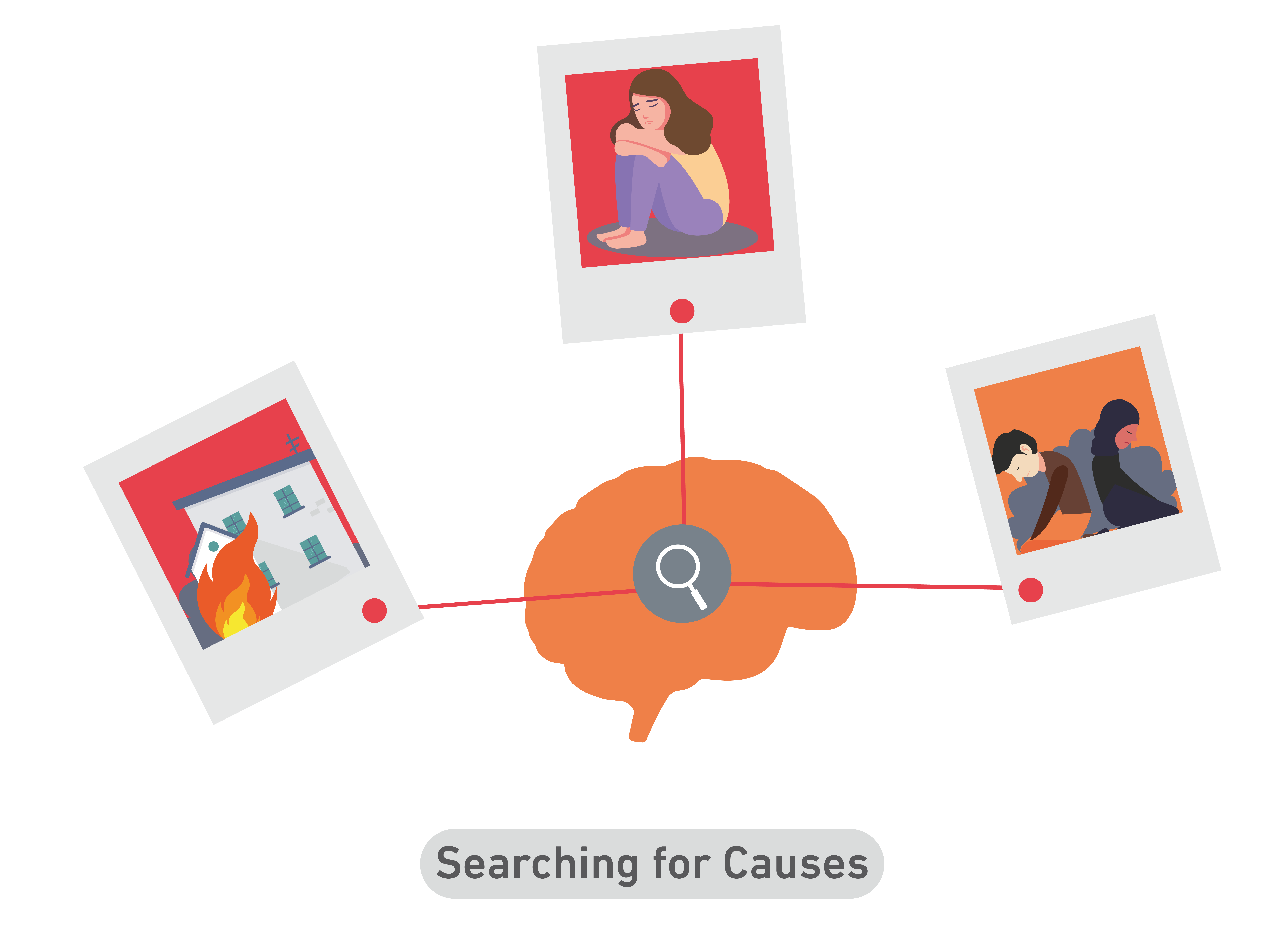
Lesson objective:
In this lesson, we will outline the brain’s risk scanning techniques. Using two main tools: association and forecasting, the brain senses inputs for the first time, interprets those inputs, and classifies them depending on their effect.
In order to stay alive and well in a world so full of risks, we have to learn fast. If survival is the priority, the brain has to learn fast and efficiently.
We previously mentioned that the brain, like an airport control tower, is constantly scanning for risks, and constantly trying to keep you alive. Your brain coordinates every response–from breath to feelings to thoughts–to help you accrue all the survival resources you need to survive, everything from food and water to love and friendships, and to help you learn to avoid harm.
It does this mainly using two processes: associations and predictions.
These processes are distinct but closely related.
Each one is an important survival resource.
First, let’s start with associations.
An association–as you probably guessed–is a link between an object and a set of physical or emotional sensations.
For an example, think back to when you were a small child. At some point, you may have encountered a hot flame, oven, or stove or heater for the first time.
Perhaps you were helping someone in the kitchen, or just wandering around. Like many young children, you may have curiously reached out to touch the hot stove. Quickly, you found out that it is hot! And it burned you, and you quickly and instinctively recoiled your hand.
Chances are, you only needed to touch the stove once to learn an important lesson. Whether it was just once, or a few incidents, chances are, you have not touched a hot stove since then.
What happened in your brain as you learned that lesson the hard way? Your brain formed an association between the stove and the physical sensations and emotions you felt–which were very unpleasant.

When inputs are first sensed, the brain has to interpret those inputs.
Are they good? Pleasurable? Dangerous? Friendly? Unfriendly?
Sometimes inputs are a strong sensation in your gut, your chest, or just a general emotional state–sadness, happiness, joy.
Importantly, these associations the brain forms can be positive or negative. It depends on the degree and direction of the feeling or emotion that was caused by the experience.
A brain that prioritizes survival–like yours and mine–is particularly sensitive to negative associations. It is important to remember that your associations are unique to you, and to what you have lived. Not everyone shares the same negative or positive associations.
For example, not everyone is scared of dogs. Not each person gets a smile on their face when they smell fresh flowers. Each person has unique associations based on life’s experiences, and it’s important to remember that as we learn abou
t how the brain responds to stressful events.
To summarize, the brain makes associations with the entire world in us and around us as follows:
- First, we have an experience–whether caused by external inputs or internal sensations.
- Second, we recognize that it feels a certain way–good, bad, pleasurable, uncomfortable, sad, worrisome, or any number of other feelings. We categorize the experience.
- Third, we search for the cause of that feeling state. In some cases, it is clear, whereas in others it takes
 more effort and “filling in the blanks” with various possibilities.
more effort and “filling in the blanks” with various possibilities. - Fourth, either quickly or gradually, those experiences and inferences lead to an association, which, as we noted, is a link between an object and a set of sensations.
Whether good or bad, associations help us quickly and efficiently act. They help our brains–our chief communicator–do its job efficiently and effectively as we navigate a chaotic world.